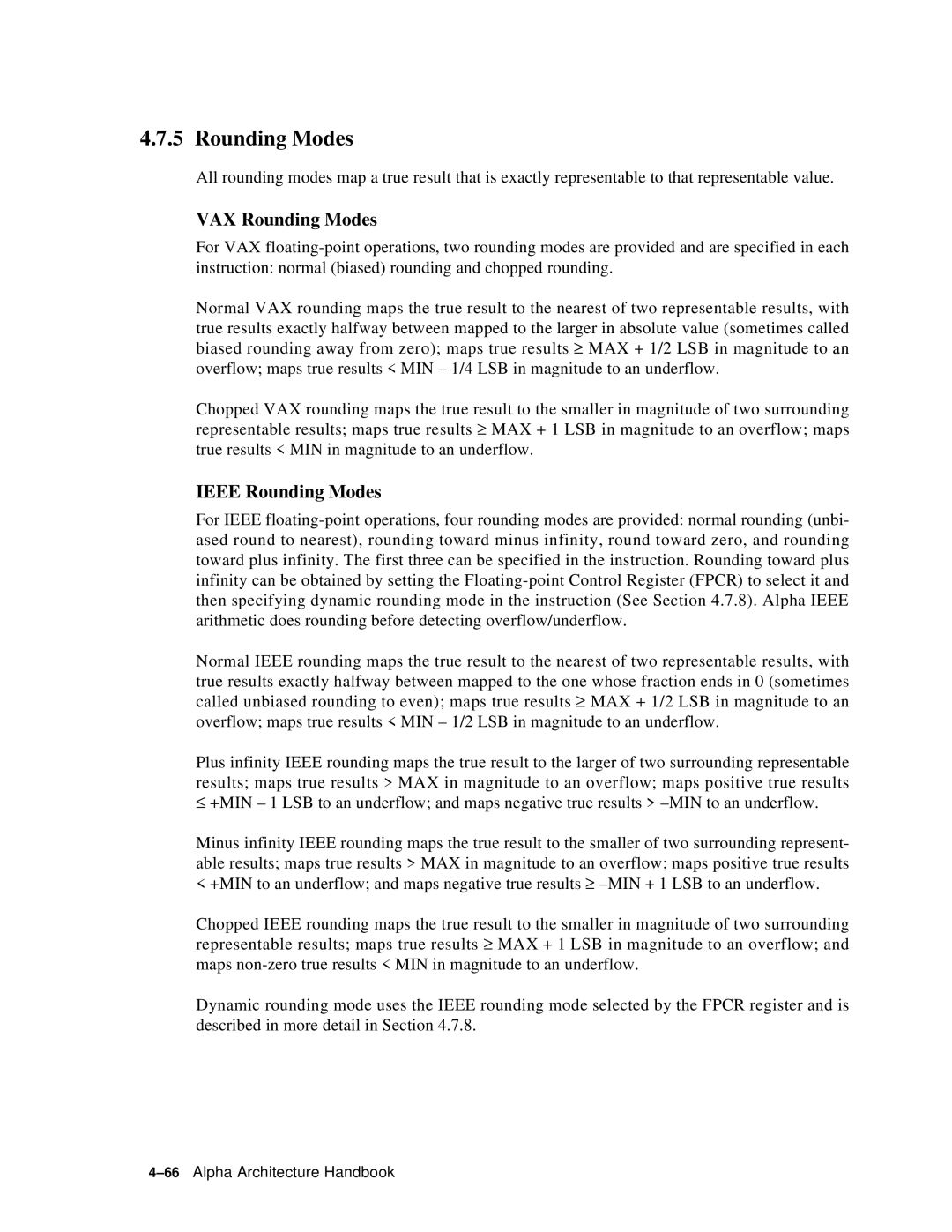4.7.5 Rounding Modes
All rounding modes map a true result that is exactly representable to that representable value.
VAX Rounding Modes
For VAX
Normal VAX rounding maps the true result to the nearest of two representable results, with true results exactly halfway between mapped to the larger in absolute value (sometimes called biased rounding away from zero); maps true results ≥ MAX + 1/2 LSB in magnitude to an overflow; maps true results < MIN – 1/4 LSB in magnitude to an underflow.
Chopped VAX rounding maps the true result to the smaller in magnitude of two surrounding representable results; maps true results ≥ MAX + 1 LSB in magnitude to an overflow; maps true results < MIN in magnitude to an underflow.
IEEE Rounding Modes
For IEEE
Normal IEEE rounding maps the true result to the nearest of two representable results, with true results exactly halfway between mapped to the one whose fraction ends in 0 (sometimes called unbiased rounding to even); maps true results ≥ MAX + 1/2 LSB in magnitude to an overflow; maps true results < MIN – 1/2 LSB in magnitude to an underflow.
Plus infinity IEEE rounding maps the true result to the larger of two surrounding representable results; maps true results > MAX in magnitude to an overflow; maps positive true results
≤+MIN – 1 LSB to an underflow; and maps negative true results >
Minus infinity IEEE rounding maps the true result to the smaller of two surrounding represent- able results; maps true results > MAX in magnitude to an overflow; maps positive true results < +MIN to an underflow; and maps negative true results ≥
Chopped IEEE rounding maps the true result to the smaller in magnitude of two surrounding representable results; maps true results ≥ MAX + 1 LSB in magnitude to an overflow; and maps
Dynamic rounding mode uses the IEEE rounding mode selected by the FPCR register and is described in more detail in Section 4.7.8.
